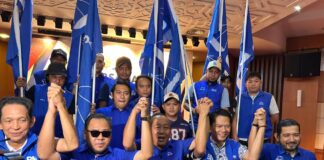By Tan Sri Lee Lam Thye
Although we have lived with Covid-19 for one year, Malaysia has not achieved the desired level of community participation and empowerment in the fight against the pandemic. Granted, it is true that there is no “global gold standard of community participation in pandemics”, it is also true that pandemic responses must have a strong government that can mobilize resources and provide clear leadership.
We believe that Malaysia can do much better in community participation and empowerment in the coming years when we have to live with Covid. What is urgently needed is to mobilise the entire community to participate in the pandemic response as well as the National Covid-19 Immunization Plan.
Relevant and adequate numbers of community leaders must be appointed to appropriate Cabinet or Ministry-level committees or task forces, such as the Covid-19 Vaccine Supply Access Guarantee Committee. Right now, these committees or task forces are mostly staffed by leaders or senior civil servants in the federal government.
It is crucial that the government consciously and actively engages with external community leaders and technical experts instead of relying solely on internal resources. Top-down paternalism is simply not sustainable.
Non-governmental individuals (NGIs) and NGOs can strengthen decision-making in Putrajaya. NGIs and NGOs bring genuine concerns, experience and networks, making decisions more realistic and not issued from an ivory tower. NGIs and NGOs ensure diverse voices are heard, making decisions more inclusive and balanced.
NGIs and NGOs can also play a part in implementing the decisions, which is often a missing link between civil servants in Putrajaya and in the field. A structured participation of NGOs and NGIs could have created robust and more acceptable SOPs.
Community leaders can easily help in the communication and education platforms, acting as a link from the government to the community.
Community leaders can also act as a feedback mechanism, sending information and concerns from the community to the government. Ideally, community leaders will mobilize resources, fill in small gaps in the community (leaving large gaps to the government) and promote community resilience and cohesion.
Relevant and adequate numbers of community leaders should be appointed to relevant task forces within the Immunisation Program, such as in community engagement, public education or vaccine confidence.
The government should engage with communities as equal partners, instead of issuing top-down directives. The government should also allow space for communities to decide how they can best help, instead of providing a one-size-fits-all framework. The government should make it easier for communities by finding a balance between sufficient oversight to ensure transparency and integrity and enough freedom to operate to encourage more citizens to join community activities.
If done right, community participation in a multi-year pandemic will help improve health and non-health outcomes. Regular participation will improve familiarity and trust between government officers and the community. This can ease future dialogues, decisions and implementation. Public health leaders will also benefit if they know which NGO or NGI can be approached to help with public education, translation support for migrant communities, or measures to increase vaccine confidence.
Community leadership and participation are crucial for a successful vaccination programme such as building vaccine confidence, community organisation for vaccine logistics and delivery and long-term training of community health workers.
TAN SRI LEE LAM THYE
CHAIRMAN
ALLIANCE FOR SAFE COMMUNITY


